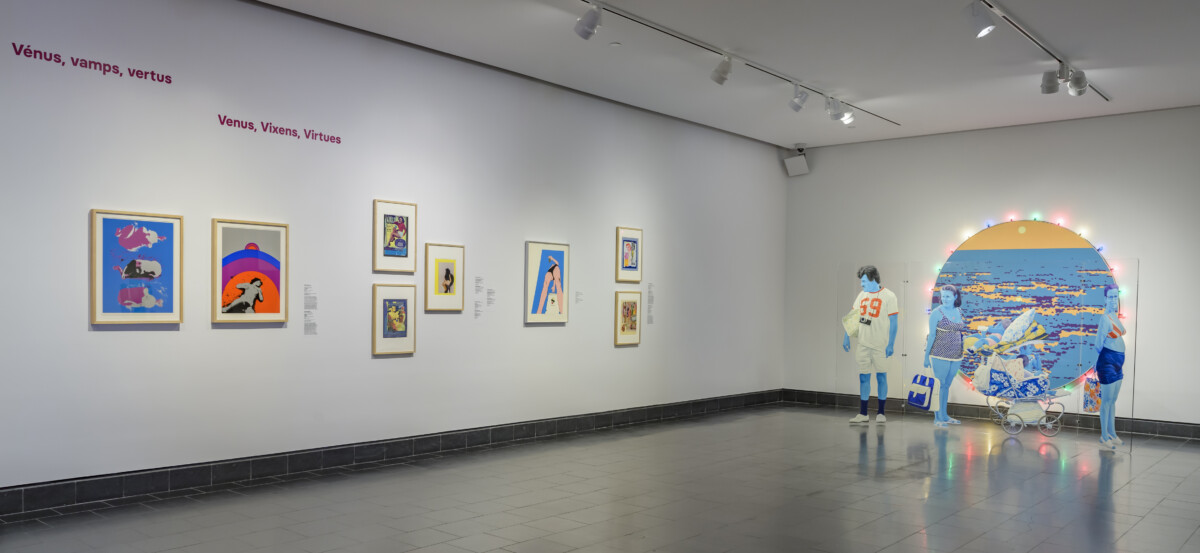The MMFA’s new exhibition attempts to address the objectification of women in Pop art—how did they do?
The Montreal Museum of Fine Arts recently opened their new exhibition The Pop of Life! Pop Art in the Collection of the MMFA. The exhibition features a selection of around 70 artworks from the museum’s collection that belong to the Pop art movement of the 1960’s and 1970’s. The thematic display takes the audience on a tour of the numerous concerns the artists associated with the movement: commodity culture, political events and the sexual objectification of women.
Upon entering the exhibit to the left, the audience encounters one of the first themes showcased, Venus, Vixens, Virtue, which includes works by Eduardo Paolozzi and Montreal natives Gilles Boisvert and Pierre Ayot. This theme transparently exhibits examples of the ways the movement’s male artists used feminine archetypes in their work.
The representation of women in visual art has a long and troublesome history. Across cultures, male artists and patrons have exercised their presumed entitlement to appropriate women’s bodies in art for their own aesthetic and erotic pleasure. Pop art certainly inherits this legacy, and it is interesting to consider the manifestations of this continuity in a movement concerned with challenging the traditions of fine art. This begs the question: how much do these images really serve as a critical commentary of the fetishization of women?
The brief accompanying description vaguely and obligingly disclaims that these images are largely a reflection of the sexual revolution. It also maintains that “sensibilities have evolved” and that the male gaze is “now being confronted and questioned.” However, any viewer who skips the didactic is simply presented with a lifeless white wall of vibrantly coloured prints of objectified women.
Gilles Boivert’s 1972 Les Oiseaux is a collection of graphic, brightly coloured screen prints of nude women in a variety of sexually explicit positions. In Woman, a black and white woman reclines on an abstract background of bright, warm colour. Her position and expression suggests a moment of sexual ecstasy.
This print is certainly a product of its time and has the potential to contribute to the celebration of women’s nascent sexual freedom. However, to what degree is this really a celebration of a woman’s agency and pleasure rather than an overt display of her body for the pleasure of the viewer? The woman in the print is denied an individual identity, reducing her to an archetype. Explicit sexuality in a red, purple and blue vacuum hardly demonstrates women’s empowerment; it is a one-dimensional approach that robs women of nuance. This tension seems to be left unaddressed.
I am certainly not arguing in favour of the censorship or burial of these images. Still, it is increasingly apparent that they must be displayed carefully, and perhaps in a context that makes more of a thorough examination of their function. Ultimately, there is very little effort on the part of the museum to truly confront the pernicious aspects of this selection of artworks.
